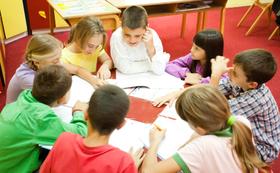Top Rankings
Norway J7 School District ranks among the top 20% of public school district in Wisconsin for:
Category
Attribute
Overall Rank
Highest overall rank (Top 20%)
Math Proficiency
Highest math proficiency (Top 20%)
Reading/Language Arts Proficiency
Highest reading/language arts proficiency (Top 20%)
Science Proficiency
Highest science proficiency (Top 5%)
Student Attention
Lowest student-teacher ratio (Top 1%)
For the 2025-26 school year, there is 1 public school serving 89 students in Norway J7 School District. This district's average testing ranking is 9/10, which is in the top 20% of public schools in Wisconsin.
Public School in Norway J7 School District have an average math proficiency score of 55% (versus the Wisconsin public school average of 40%), and reading proficiency score of 55% (versus the 38% statewide average).
Minority enrollment is 21% of the student body (majority Hispanic), which is less than the Wisconsin public school average of 34% (majority Hispanic and Black).
Overview
This School District
This State (WI)
# Schools
1 School
2,218 Schools
# Students
89 Students
813,657 Students
# Teachers
9 Teachers
58,936 Teachers
Student-Teacher Ratio
10:1
10:1
Student By Grade
District Rank
Norway J7 School District, which is ranked within the top 20% of all 443 school districts in Wisconsin (based off of combined math and reading proficiency testing data) for the 2022-2023 school year.
Overall District Rank
#57 out of 447 school districts
(Top 20%)
(Top 20%)
Math Test Scores (% Proficient)
55%
40%
Reading/Language Arts Test Scores (% Proficient)
50-59%
38%
Science Test Scores (% Proficient)
60-79%
44%
Students by Ethnicity:
Diversity Score
0.35
0.53
% American Indian
n/a
1%
% Asian
n/a
4%
% Hispanic
19%
14%
% Black
n/a
9%
% White
79%
67%
% Hawaiian
n/a
n/a
% Two or more races
2%
5%
All Ethnic Groups
District Revenue and Spending
The revenue/student of $17,944 is higher than the state median of $17,045. The school district revenue/student has stayed relatively flat over four school years.
The school district's spending/student of $20,292 is higher than the state median of $17,018. The school district spending/student has stayed relatively flat over four school years.
Total Revenue
$2 MM
$13,869 MM
Spending
$2 MM
$13,846 MM
Revenue / Student
$17,944
$17,045
Spending / Student
$20,292
$17,018
Best Norway J7 School District Public Schools (2025-26)
School
(Math and Reading Proficiency)
(Math and Reading Proficiency)
Location
Quick Facts
Rank: #11.
Drought Elementary School
(Math: 50-59% | Reading: 50-59%)
Rank:
Rank:
9/
Top 20%10
21016 7 Mile Rd
Franksville, WI 53126
(262) 895-7778
Franksville, WI 53126
(262) 895-7778
Gr: PK-8 | 89 students Student-teacher ratio: 10:1 Minority enrollment: 21%
Frequently Asked Questions
How many schools belong to Norway J7 School District?
Norway J7 School District manages 1 public schools serving 89 students.
What is the rank of Norway J7 School District?
Norway J7 School District is ranked #56 out of 443 school districts in Wisconsin (top 20%) based off of combined math and reading proficiency testing data for the 2022-2023 school year. This district ranks in the top 20% of Wisconsin school districts for: Highest overall rank (Top 20%), Highest math proficiency (Top 20%), Highest reading/language arts proficiency (Top 20%), Highest science proficiency (Top 5%) and Lowest student-teacher ratio (Top 1%)
What is the racial composition of students in Norway J7 School District?
79% of Norway J7 School District students are White, 19% of students are Hispanic, and 2% of students are Two or more races.
What is the student/teacher ratio of Norway J7 School District?
Norway J7 School District has a student/teacher ratio of 10:1, which is lower than the Wisconsin state average of 14:1.
What is Norway J7 School District's spending/student ratio?
The school district's spending/student of $20,292 is higher than the state median of $17,018. The school district spending/student has stayed relatively flat over four school years.
Recent Articles

School Vouchers: Updated Pros and Cons (2025 Review)
Comprehensive 2025 analysis of school vouchers, weighing benefits and challenges for families, funding, outcomes, and policy directions.

Benefits and Drawbacks of Homework in 2025
Explore updated 2025 insights on homework鈥檚 benefits, drawbacks, mental health impact, best practices, and policy trends in U.S. public schools.

Charter Schools vs Public Schools 2025: Key Differences & Trends
Explore updated 2025 insights comparing charter schools vs public schools, enrollment, academic outcomes, funding, and real-world examples for families and educators.





